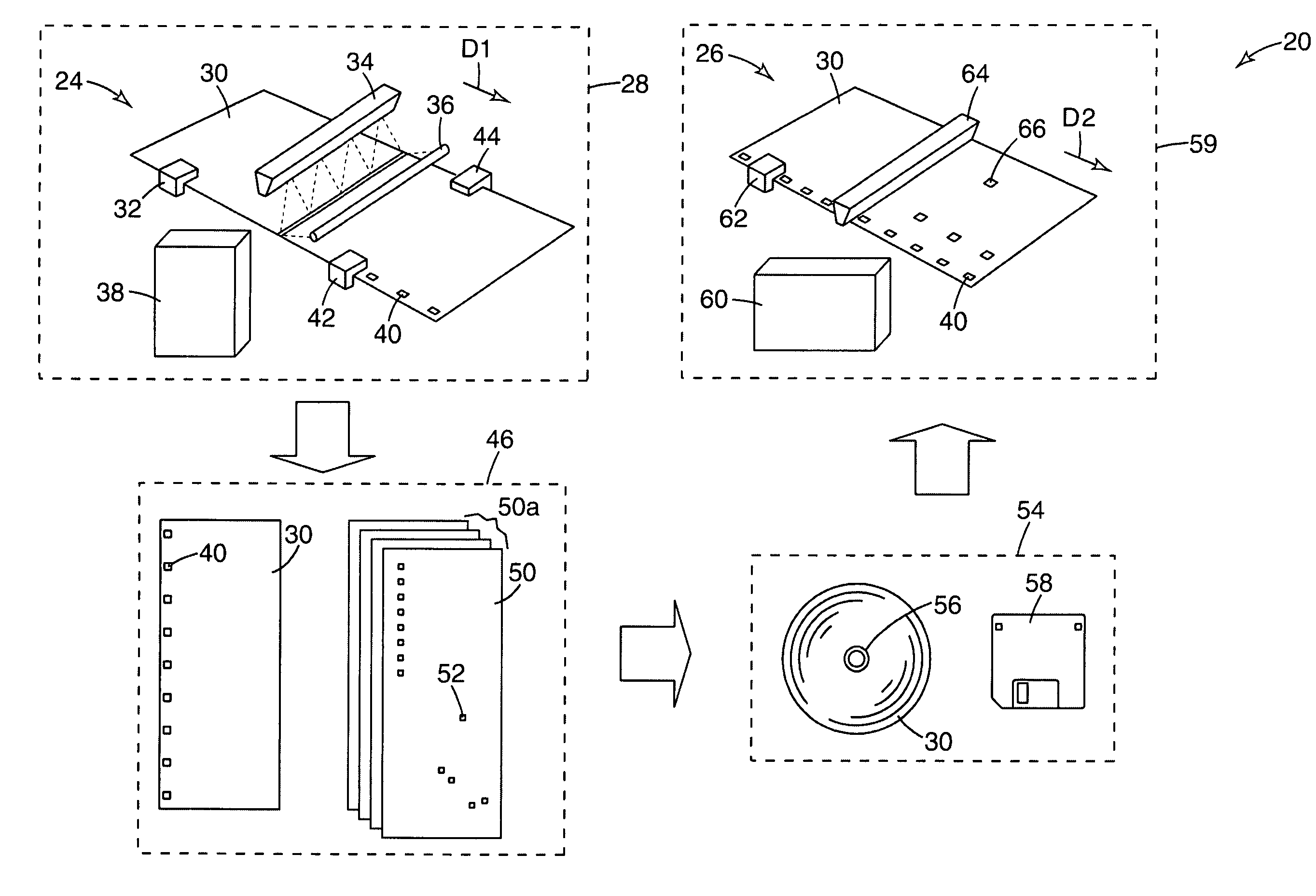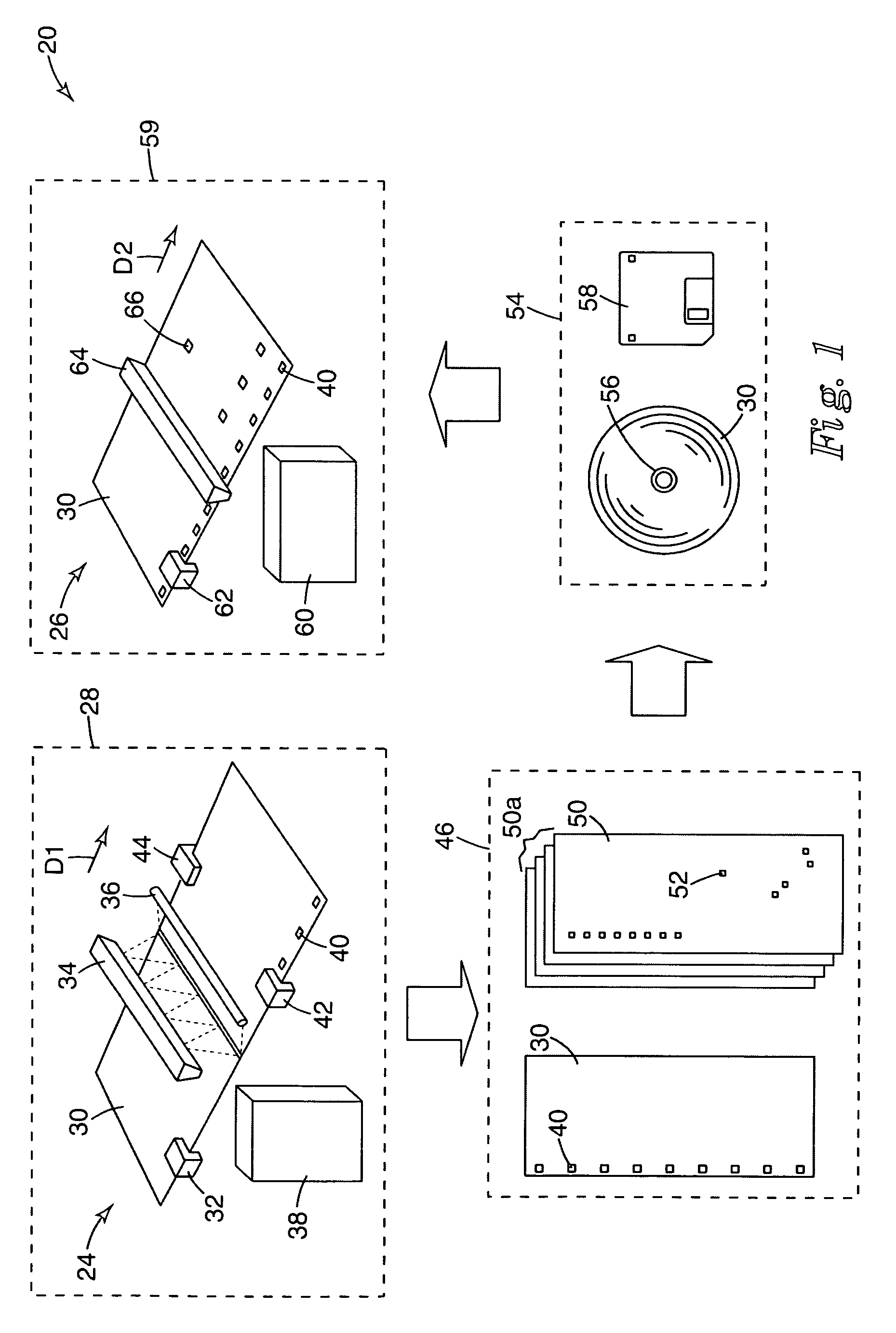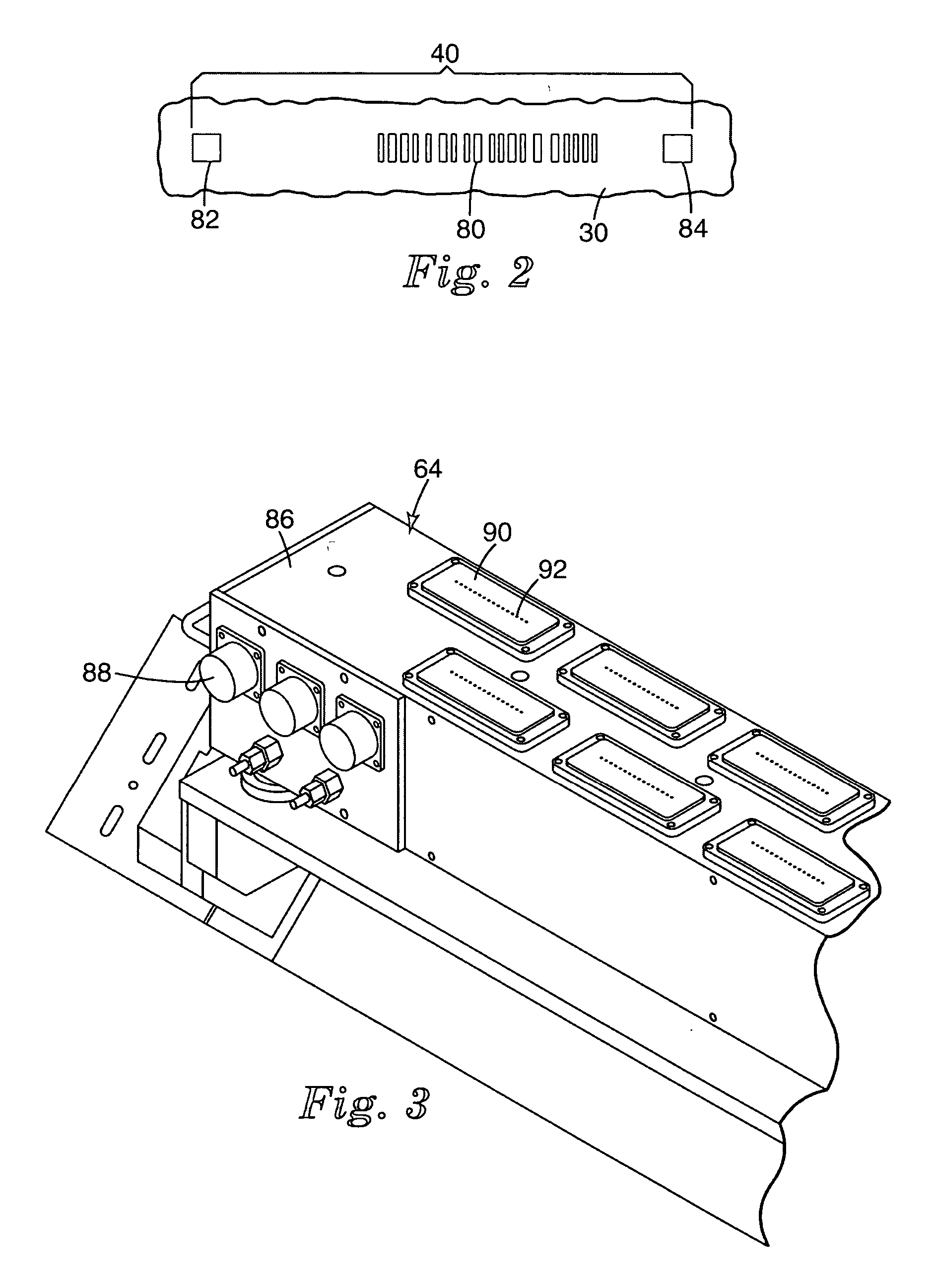Apparatus and method for the automated marking of defects on webs of material
a technology of automatic marking and defects, applied in the direction of material analysis, instruments, textiles and paper, etc., can solve the problems of insufficient edge marking of webs, difficult to accurately identify defective areas, and insufficient marking of web edges
- Summary
- Abstract
- Description
- Claims
- Application Information
AI Technical Summary
Benefits of technology
Problems solved by technology
Method used
Image
Examples
example 1
[0054] A model 6800 Lynx printer was adapted to print along the edge of a web so as to serve as a fiducial marker, and was used to print fiducial marks on a moving polymeric web. Each of these fiducial marks included a bar-code and a fiducial position generally as depicted in FIG. 2. The polymeric web was formed from transparent polyester 5 mils thick, commercially available from 3M Company, St. Paul, Minn.
[0055] The web, bearing its fiducial marks, was then directed to an inspection module that imaged sequential portions of the web. This imaging was accomplished by a model AT71XM2CL4010-BA0 camera, commercially available from Atmel of San Jose, Calif. The web was viewed backlit by a lighting module commercially available from Schott-Fostec, LLC, of Alexandria, Va. Digital information from the camera was sent to a model Precision 530 digital computer, commercially available from Dell Computer Corp. of Round Rock, Texas. There it was processed with an initial algorithm to identify r...
example 2
[0056] The web of example 1 was placed in motion, unwinding from its spool in the reverse direction from which it was wound. It was directed past a fiducial reader including a model Legend 530 camera, commercially available from DVT of Duluth, Ga. Positional control over the web as it passed by the fiducial reader was provided by a servo position controller commercially available from Accuweb of Madison Wis., based on information from the web edge sensor commercially available as model 1.5X3U 4043-01, also from Accuweb. The illumination of the web at the fiducial reader was provided by a backlight module commercially available from Advanced Illumination of Rochester, Vt. The output of the camera was directed to a web marker controller comprising a model Precision 530 digital computer, commercially available from Dell Computer Corp., so that information localizing the fiducial marks on the web could be obtained.
[0057] The processor in the web marker controller was also provided with...
example 3
[0059] The web according to Example 1 was moved and marked generally according to description in Example 2, except that the web marker controller was provided with a subsequent algorithm designed to use distinguish actual defects rendering that portion of the web unsuitable for a particular contemplated end-use from other anomalies among the extracted information in the electronic map. During the run, the web marker controller was further programmed to send commands to the web marker to place locating marks on only those anomalies that qualified according to the subsequent algorithm as actual defects.
PUM
| Property | Measurement | Unit |
|---|---|---|
| thick | aaaaa | aaaaa |
| length | aaaaa | aaaaa |
| length | aaaaa | aaaaa |
Abstract
Description
Claims
Application Information
 Login to View More
Login to View More - R&D
- Intellectual Property
- Life Sciences
- Materials
- Tech Scout
- Unparalleled Data Quality
- Higher Quality Content
- 60% Fewer Hallucinations
Browse by: Latest US Patents, China's latest patents, Technical Efficacy Thesaurus, Application Domain, Technology Topic, Popular Technical Reports.
© 2025 PatSnap. All rights reserved.Legal|Privacy policy|Modern Slavery Act Transparency Statement|Sitemap|About US| Contact US: help@patsnap.com



